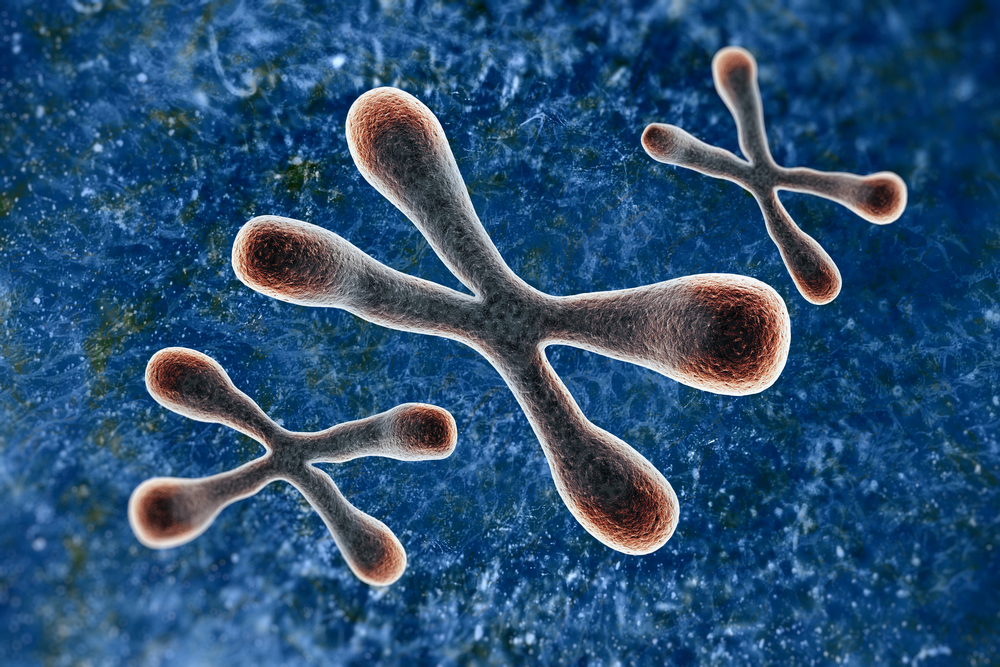Differences in Obesity-related Genetics Found Between Japanese and European Populations

The heritability of obesity-related traits is similar in Japanese and European populations but the way these traits are interrelated may be different, a study suggests — pointing to a need to further research how genetics regulates obesity in distinct populations.
The study, “Genomic Heritabilities and Correlations of 17 Traits Related to Obesity and Associated Conditions in the Japanese Population,” was published in the journal G3: Genes|Genomes|Genetics.
Complex biological traits, such as body weight and fat distribution, are affected by a combination of genetic and environmental factors. The extent to which a given trait is affected by genetics can be calculated as its heritability, with scores ranging from 0, with all variation due to the environment, to 1 — meaning all variation is due to genetics. For example, if a trait has a heritability of 0.3, about 30% of its variation can be explained by genetics.
To date, most research on the genetics that affect obesity has been done in populations of European descent. The findings from these studies, however, may not be reflective of other populations. For example, previous research has suggested that Japanese men tend to have more fat in their livers than non-Hispanic white men in the U.S., despite also tending to have a lower body mass index (BMI). Cultural differences (e.g., diet) between different populations also limit the generalizability of research that focuses on only one population.
In the study, researchers in Japan calculated the heritability for 17 obesity-associated traits — including BMI, waist circumference, and levels of molecular markers in blood and urine — using data for 18,889 Japanese individuals. The data were collected as part of the Tohoku Medical Megabank Project. About two-thirds of the analyzed individuals were women. Mean age of the participants was 54.3 for women and 60.9 for men.
The calculated heritability for the 17 traits ranged from 0.033 for urine potassium levels to 0.536 for height.
“The heritability estimates calculated for the Japanese population were largely comparable to those from previous research conducted in populations of European descent,” the researchers wrote.
For example, the estimated heritability for BMI was 0.248 in this Japanese study, which is similar to previous findings in white people in Britain (0.274).
“This implies that, in spite of the genetic and environmental differences that exist between European and Japanese populations, overall the contribution of common genetic variants to phenotype variation between these groups is comparable,” the researchers added.
They also calculated genetic correlations between the 17 analyzed traits. This type of analysis estimates the extent to which different traits are regulated by the same genes — theoretically, a correlation of 0 would exist between traits regulated by completely different genes, whereas two traits affected by all the same genes would have a genetic correlation of 1.
Many statistically significant correlations between the traits were found. In particular, markers of body fat (e.g., BMI and waist circumference) strongly correlated with urine markers.
Notably, these correlations were generally stronger than the correlations observed in previous studies of people of European descent. For example, the correlation between BMI and urine potassium levels was 0.38 in this study and 0.104 in a previous study using data from the U.K.
Although differences in research methodology are impossible to rule out, the distinct obesity, kidney disease, and cardiovascular risks between Japanese individuals and people in western Europe may indicate that the newly found strong correlation between urinary and obesity traits is specific to the Japanese, according to the investigators.
Since this study focused specifically on the Japanese population, the researchers said that the results likely are not generalizable to other populations. Yet, their findings will help serve as a point of comparison for future studies, the investigators said.
“Our study also shows that the heritability estimates for these traits are similar in magnitude to those of populations of European descent, and suggests potential differences with respect to the genetic correlations; however, further research is needed to compare the genetic architecture of each trait in these populations,” the researchers concluded.




